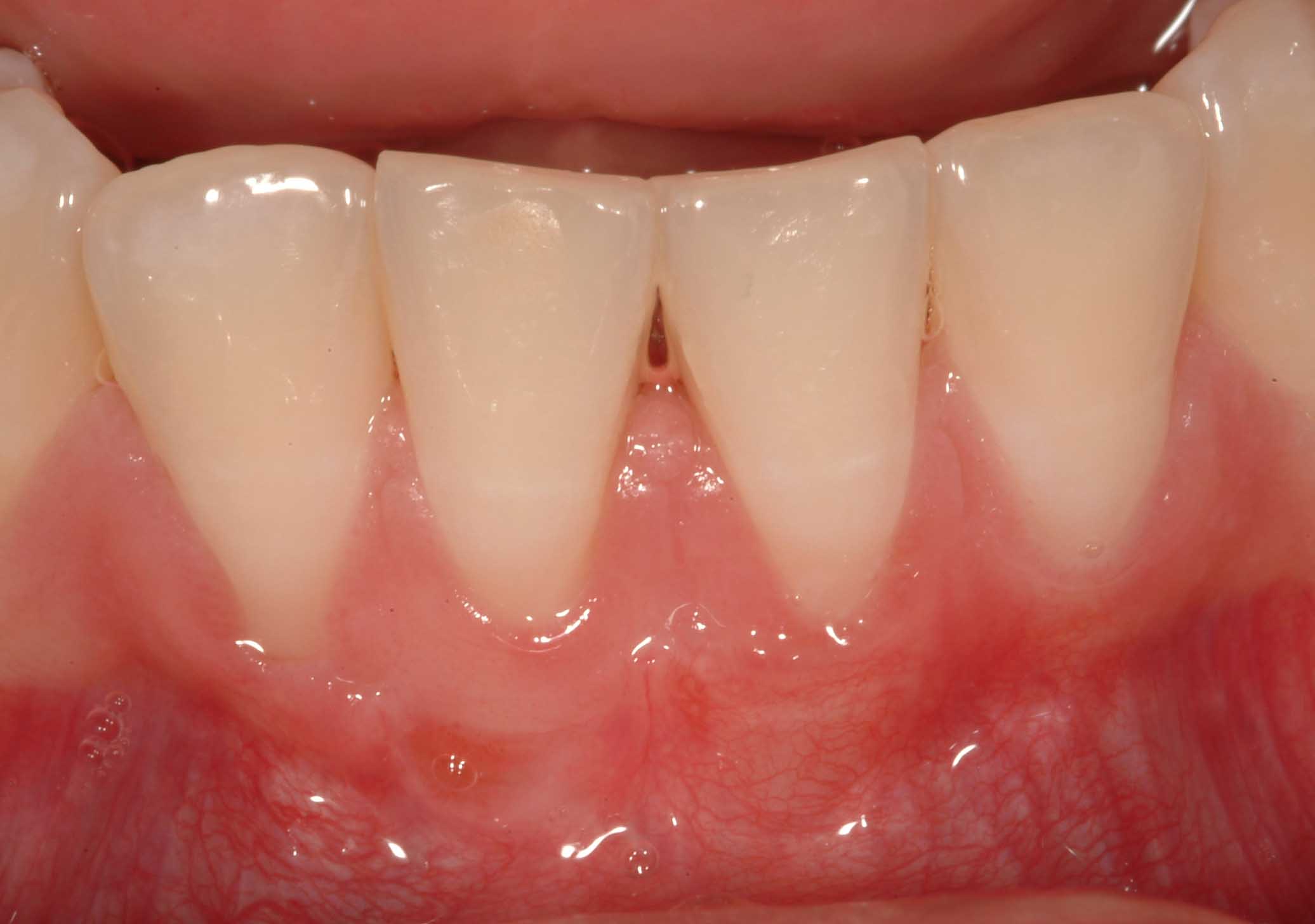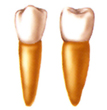Human teeth are divided into classes on the basis of form and function. Both the primary and permanent
dentitions include incisor, canine, and molar classes. The fourth class, the premolar, is found only in the permanent dentition. Tooth form predicts the function of teeth; therefore class traits are the characteristics that place teeth into functional categories. Since the diet of humans consists of both animal and vegetable foods, the human dentition is called omnivorous.
Incisors
 |
| lower incisor |
Canines
 The canines possess the longest roots of all teeth and are located at the corners of the dental arch. They function in the seizing, piercing, and tearing of food, as well as in cutting. From a proximal view the crown also has a triangular shape with a thick incisal ridge. The stocky anatomic form of the crown and length of the root are reasons why these teeth are strong, stable abutment teeth for a fixed or removable prosthesis. The canines serve as important guides in occlusion because of their anchorage and position in the dental arches.
The canines possess the longest roots of all teeth and are located at the corners of the dental arch. They function in the seizing, piercing, and tearing of food, as well as in cutting. From a proximal view the crown also has a triangular shape with a thick incisal ridge. The stocky anatomic form of the crown and length of the root are reasons why these teeth are strong, stable abutment teeth for a fixed or removable prosthesis. The canines serve as important guides in occlusion because of their anchorage and position in the dental arches.Premolars
 The premolars serve a dual role in function; they act like the canines in the tearing of food and are similar to molars in the grinding of food. Whereas the first premolars are angular, with their facial cusps resembling the canines, the lingual cusps of the maxillary premolars and molars have a more rounded anatomic form. The occlusal surfaces present a series of curves in the form of concavities and convexities that should be maintained throughout life for correct occlusal contacts and function.
The premolars serve a dual role in function; they act like the canines in the tearing of food and are similar to molars in the grinding of food. Whereas the first premolars are angular, with their facial cusps resembling the canines, the lingual cusps of the maxillary premolars and molars have a more rounded anatomic form. The occlusal surfaces present a series of curves in the form of concavities and convexities that should be maintained throughout life for correct occlusal contacts and function.Molars
 The molars are large, multicusped, strongly anchored teeth located nearest the temporomandibular joint (TMJ), which serves as the fulcrum during function. These teeth have a major role in the crushing, grinding, and chewing of food to the smallest dimensions suitable for deglutition. The occlusal surfaces of both premolars and molars act as a myriad of shears that function in the final mastication of food. The premolars and molars are also important in maintaining the vertical dimension of the face .
The molars are large, multicusped, strongly anchored teeth located nearest the temporomandibular joint (TMJ), which serves as the fulcrum during function. These teeth have a major role in the crushing, grinding, and chewing of food to the smallest dimensions suitable for deglutition. The occlusal surfaces of both premolars and molars act as a myriad of shears that function in the final mastication of food. The premolars and molars are also important in maintaining the vertical dimension of the face .Reference : Heyman, H.O. 2012. Sturdevant's Art and Science of Operative Dentistry. Mosby. US.
No comments :
Post a Comment